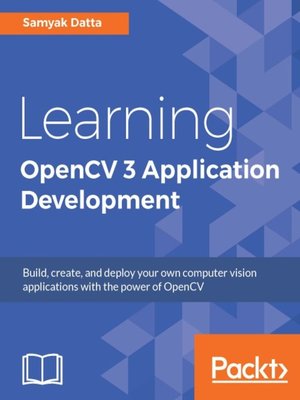
Sign up to save your library
With an OverDrive account, you can save your favorite libraries for at-a-glance information about availability. Find out more about OverDrive accounts.
Find this title in Libby, the library reading app by OverDrive.



Search for a digital library with this title
Title found at these libraries:
| Library Name | Distance |
|---|---|
| Loading... |
Build, create, and deploy your own computer vision applications with the power of OpenCV
About This Book
Who This Book Is For
This is the perfect book for anyone who wants to dive into the exciting world of image processing and computer vision. This book is aimed at programmers with a working knowledge of C++. Prior knowledge of OpenCV or Computer Vision/Machine Learning is not required.
What You Will Learn
In Detail
Computer vision and machine learning concepts are frequently used in practical computer vision based projects. If you?re a novice, this book provides the steps to build and deploy an end-to-end application in the domain of computer vision using OpenCV/C++.
At the outset, we explain how to install OpenCV and demonstrate how to run some simple programs. You will start with images (the building blocks of image processing applications), and see how they are stored and processed by OpenCV. You?ll get comfortable with OpenCV-specific jargon (Mat Point, Scalar, and more), and get to know how to traverse images and perform basic pixel-wise operations.
Building upon this, we introduce slightly more advanced image processing concepts such as filtering, thresholding, and edge detection. In the latter parts, the book touches upon more complex and ubiquitous concepts such as face detection (using Haar cascade classifiers), interest point detection algorithms, and feature descriptors. You will now begin to appreciate the true power of the library in how it reduces mathematically non-trivial algorithms to a single line of code!
The concluding sections touch upon OpenCV?s Machine Learning module. You will witness not only how OpenCV helps you pre-process and extract features from images that are relevant to the problems you are trying to solve, but also how to use Machine Learning algorithms that work on these features to make intelligent predictions from visual data!
Style and approach
This book takes a very hands-on approach to developing an end-to-end application with OpenCV. To avoid being too theoretical, the description of concepts are accompanied simultaneously by the development of applications. Throughout the course of the book, the projects and practical, real-life examples are explained and developed step by step in sync with the theory.







